
Medieval fortress used again in 21st century
(MENAFN- Brazil-Arab News Agency (ANBA)) Alexandre Rocha
Al-Nasrah, Syria – The team of journalists from different countries invited by Syria's ministry of Tourism to visit the country left Palmyra late at night on August 30 to Al-Nasrah, a majorly Christian city in the middle of the mountains 216 km west from there.
The convoy of two minibus, a van and a car stopped midway around midnight so that people could eat and drink something at a simple but well-stocked establishment by the road. Some ate falafel sandwiches, fries, other drank water, sodas or beer.

View from Al Khair hotel, with Crac des Chevaliers on the background: few guests
Struggling to find their inn, Amar Hotel, the group rode astray during the night, stopping everywhere for directions. This made everyone uneasy, since there is still a conflict going on in Syria and the fights raged in the region of Idlib, just up 170 kilometers to the north.
After a while, two guys on a motorbike helpfully lead the group up the mountain to their hotel. It was 3 am already.
Al-Nasrah sits in an eminently touristic region, full of hotels overlooking the beautiful mountains and the valleys below. With the war, the tourism sector suffered greatly and two of the establishment ANBA visited had few guests in them, despite the cloudless blue sky, smoldering sun and appealing swimming pools.
Fortification
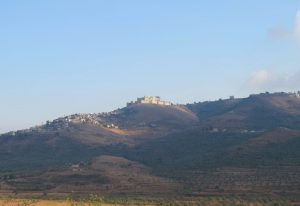
The castle seen from afar
The main attraction there is the Crac des Chevaliers ('Castle of the Knights,' or 'Qalat Al-Hosn,' Arabic for 'Castle of the Fortress'), the main theme of the third story of ANBA series on Syria. It was one of the world's best preserved medieval castles before the war started in 2011 – it's the epitome of a medieval castle – considered a World Heritage of the United Nations Educational, Scientific and Cultural Organization (UNESCO) and included on the UNESCO list of World Heritage in Danger since 2013.
It was built and occupied by the Knights of Saint John, the order of the Hospitallers from 1142 to 1271 on the top of a mountain where there was a fort before. It's one of the several castles built by the European crusades in Syria and Palestine. It was taken in 1271 by Mamluk sultan Al-Zahir Baibars and the new occupiers kept adding appendages to the castle.
Just like the Crusaders in the Middle Ages, jihadist insurgents withdrew into the castle and fought the Syrian army from there. The castle was retaken in March 2014 after two years of occupation and was heavily damaged during the confrontations. On August 31, when ANBA visited it, the deeper parts of the fortress were closed for visitation, and one of the keeps had a hole on the ceiling and debris on the ground beneath.
The monument hasn't lost its majesty, tough, and proved its walls are still strong despite the age. Its magnificent keeps and walls are striking and tower over Wadi Al-Nasara, the Valley of Christians. The view from up there is breathtaking.
(Story continues after photo gallery)
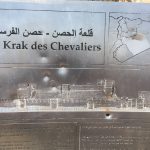
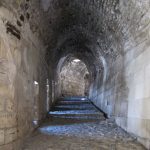

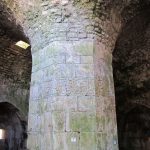

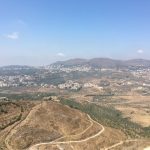
While the castle took some damage, the predominantly Muslim village down the slope, 'Al-Hosn' ('The Fortress,' referring to the site), was left in ruins after the fights, and there's almost no one there now.
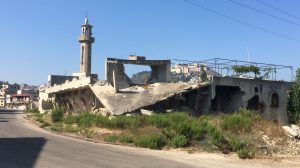
Ruined building and mosque in the village of Al-Hosn
It's worthy reminding that the war in Syria caused 5.6 million people to run from the country since 2011, and they took refuge particularly in the neighbor countries of Lebanon, Jordan, Iraq and Turkey; over 6.6 million domestic dislodged people as per figures from the United Nations High Commissioner for Refugees (UNHCR); and at least 400,000 deaths, also according to the UN.
Saint George
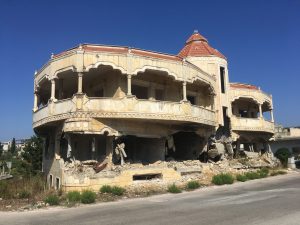
Destroyed house in Al-Hosn
In the same region sits the Orthodox Christian Saint George's Monastery. It was founded around the 4th or 6th century, and traces of that time can still be found in the subsoil. Its old church on the ground level is likely from the time of the Crusades, according to information from the Greek Orthodox Patriarchate of Antioch and All the East, based in Damascus. The more recent buildings are from the 19th century, including another church. The complex also held a school. Saint George is the most popular saint among Christians in the Middle East.
(Story continues after photo gallery)


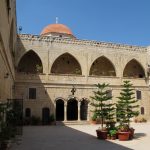
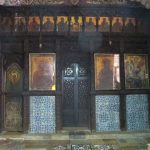
The day also saw a visit to the shopping street of Al-Nasrah, which isn't very thriving now and offers a meager variety of products. A highlight, however, is the XO store of young fashion Made in Syria. It sells T-shirts with cool prints and very beautiful styled Arabic writings.
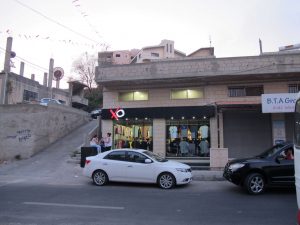
XO store is worth a visit
On the next morning, the group of journalists was supposed to depart for Aleppo, the country's largest city, but the trip was canceled because of some risks thanks to the news of a bombing in the region. Then, the convoy went to Latakia, a port city by the Mediterranean Sea, but you'll read all about that on the next story of this ANBA special series about Syria on Saturday (14).
*ANBA traveled at the invitation of Syria's Ministry of Tourism. Translated by Guilherme Miranda
.jpg)
Legal Disclaimer:
MENAFN provides the
information “as is” without warranty of any kind. We do not accept
any responsibility or liability for the accuracy, content, images,
videos, licenses, completeness, legality, or reliability of the information
contained in this article. If you have any complaints or copyright
issues related to this article, kindly contact the provider above.

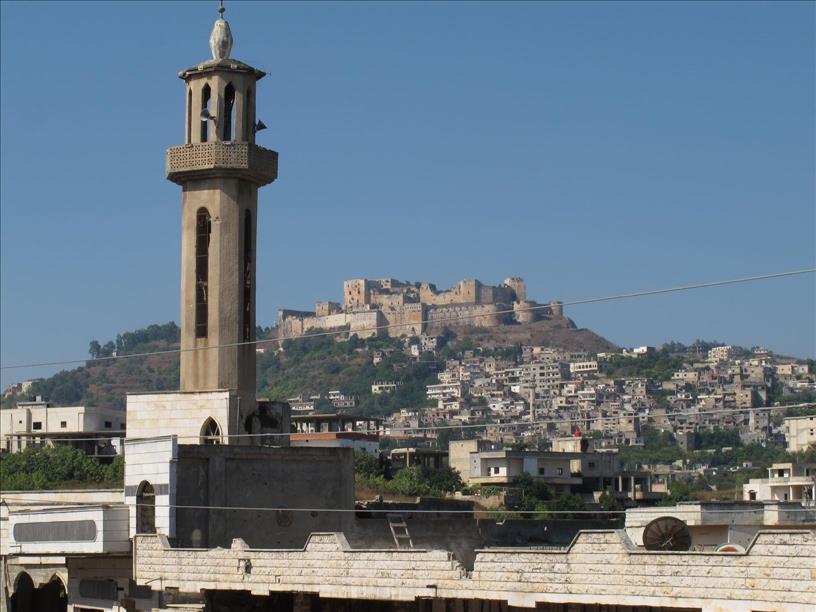
















Comments
No comment